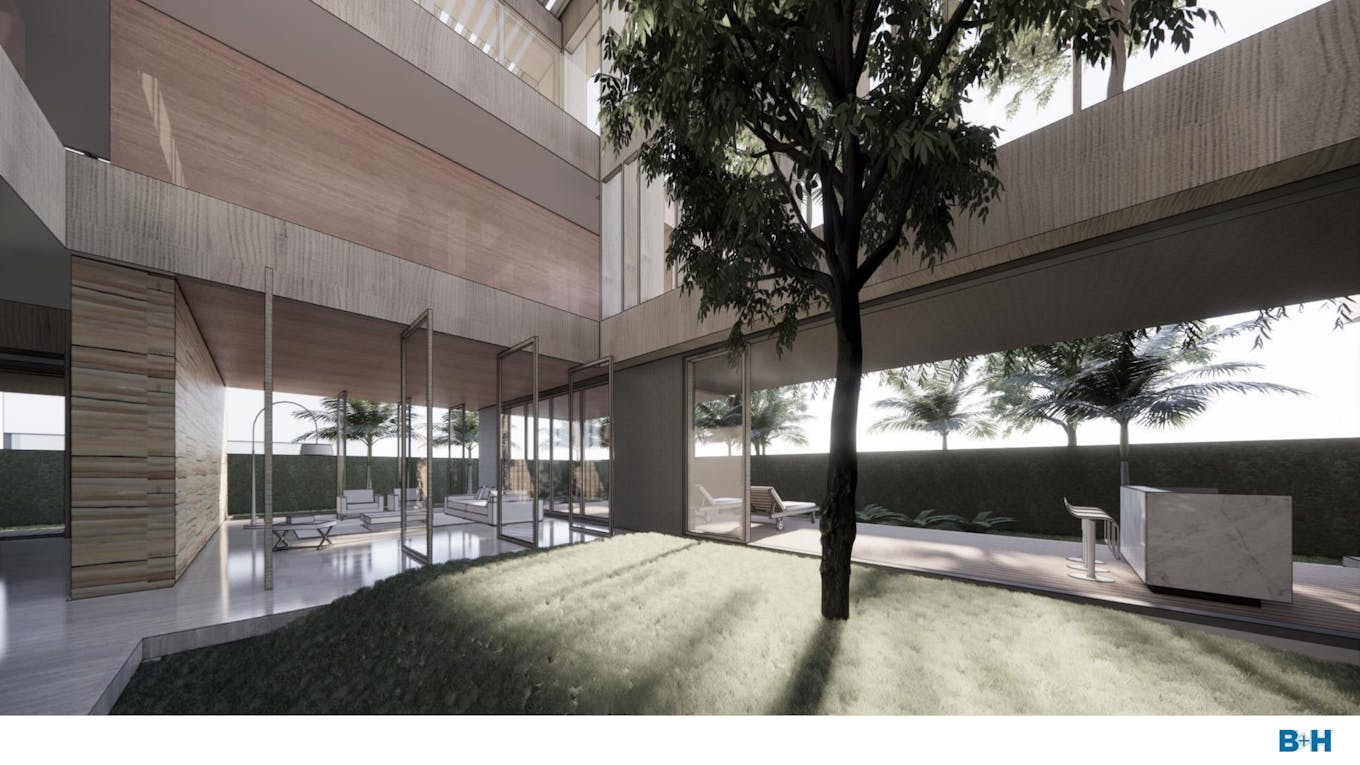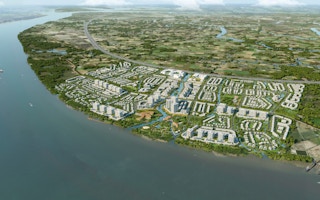Nature is the planet’s most creative, and by default, greenest designer, and has inspired humankind to come up with better solutions since the dawn of time.
“Just take a look at flowers, forests, spider silk and skin, which are ideals in packaging, circular economies, sustainable manufacturing and dynamic facades,” said Dr Jamie Miller, director of biomimicry at architecture and design consultancy B+H.
Since discovering biomimicry – the field of modelling materials and structures after nature to solve problems – as an undergraduate engineering student in 2004, Miller has made it his life’s work to promote it. Before joining B+H in November 2021, he founded Biomimicry Frontiers, a design and urban planning consulting firm, and completed projects such as a green home in India, a 200-hectare sustainable development in Vietnam, a food growing and sharing project in Guelph, Canada, and more. The firm has also collaborated with B+H on various projects.
“So much has changed in the past few decades. Now, there are global networks, incubators and research grants specific to biomimicry in dozens of countries,” said Miller. According to the San Diego-based Fermanian Business and Economic Institute, by 2030, biomimicry-based innovation could account for US$1.6 trillion in global output. In Asia, design firms increasingly recognise the value of adopting biomimicry principles in their work.

Dr Jamie Miller is director of biomimicry at architecture and design consultancy B+H.
B+H, where Miller works now, was acquired by Singapore-based Surbana Jurong Group, a global consultancy that focuses on infrastructure and urban development in 2018, to strengthen its green architecture and interior design services. In this interview, Miller shares how the built environment sector can embrace biomimicry, and why it must do so quickly.
You have said that there is a need to embed a nature-based approach to architecture, planning and design – essentially, to embrace biomimicry in those fields. Why is this urgent now?
Our designs reflect our assumptions. When you look at dominant urban design strategies, you can see that our thinking is driven by the idea that humans are somehow separate from nature; that we can predict, dominate and control nature, and that nature exists for unlimited human consumption – all ideas rooted in thinking of several hundred years ago.
The longer we continue to build with an outdated paradigm of how nature works, the larger will be the collapse of our cities and societies as we know it, and the more extreme the sudden adjustment required. We are already seeing this with the impacts of climate change, Covid-19 and the disasters that are manifesting at the global scale.
How can architects and urban planners adopt biomimicry in their work?
There are three ways you can apply biomimicry: emulating form, process or systems.
Form-based biomimicry is about copying shapes in nature, such as humpback whale fins to make more efficient wind turbine blades, or a burdock’s hooks to make Velcro. Nature has been refining designs for 3.8 billion years, and the forms we see in nature are long-evolved strategies for achieving universal functions.
Process-based biomimicry is the next level of biomimicry, in that it emulates the way nature manufactures these forms. Spider silk, which has a strength-to-weight ratio greater than any material humans have ever made, is manufactured at body temperature and pressure, using a subset of the periodic table of elements, and all in sustainable water-based chemistry.
With advancements in 3D printing, additive manufacturing, green chemistry, new materials like mycelium-based products, recyclable packaging and furnishings, this level of biomimicry is becoming increasingly more credible.
System-based biomimicry is the deepest and perhaps most important level of application. It is about moving beyond ‘doing less harm’ and finding ways to contribute to our environments. This could be about responsive designs or open source data – ultimately, creating conditions that are conducive to more life. By learning the deeper principles of how nature works as a system, we can start to transform our views of design.
You have also said that the application and awareness of biomimicry are not where they should be. What are the challenges in adoption now?
I have found that, once described, most people understand the concept of biomimicry but have not heard of the word. People also often struggle to apply it, primarily for two reasons: it is somewhat disruptive to the way things are currently done, and it takes incredible creativity to do it well. Biomimicry requires people to be open to ideas that may dramatically differ from their own, and diverse thinkers to work together.
That being said, I think now is the ripe time for biomimicry. Massive disruptions are forcing us to question our design assumptions. With emerging technologies, the crazy ideas that we can abstract from nature, such as walls that breathe, shed and expand when needed, can be made real.
How can businesses and governments help to overcome some of these issues?
Businesses can promote deep innovation – and I mean innovation of thought, not just design. Integrate diverse thinkers in groups, embrace small-scale, internal disruptions when changes happen, and try to see failures as celebrations. Have better feedback mechanisms for small, self-organised groups to communicate with the entire company. Find out which assets in your firm may be ignored or underused, and reconfigure those assets in new ways.
As a company owner myself, I know how difficult this can be, especially when thinking of the bottom line. I’m not suggesting a total shift, just a small-scale one, at least in the beginning. Make sure there’s space and time for work that is not status quo.
For governments, many of the same principles are relevant. How can they hear, appreciate and integrate diverse views more openly? Perhaps they can fund creative new ideas through art projects, education systems or pilots. The key is to avoid silos in systems and the thinking that goes into them, and allow good ideas to evolve and inform larger systems.

This residential property, located in Bengaluru, India, was built using the principles of biomimicry, permaculture and ecological engineering in mind, allowing the landowner to build around the surrounding environment. Image: B+H
What recent developments in biomimicry do you find most exciting? What do you hope to achieve as director of biomimicry at B+H?
More and more companies are recognising that biomimicry is not just a good idea for their sustainability mandate, but an opportunity to differentiate and drive business. Look at Microsoft. In 2021, it joined B+H in hiring its first directors of biomimicry.
You also have major firms like Nike, General Mills, General Electric, Volvo and Mercedes Benz continuing to bring biology to their design tables. The development and use of biomimicry has changed fundamentally since 2004 when I came across it, and I expect even better things in the next two decades.
My goal at B+H is to showcase how a multinational company can evolve to become a leader in sustainability, specifically through biomimicry. My hope is that we become the first major company fully driven by the philosophy of biomimicry, so that we think, behave and create in a way that is in harmony with the natural world.
I think we humans forget that we are a very young species. The natural world is a reflection of billion-year-old ideas that can not only take care of our needs, but could teach us how to live sustainably on this planet. By the end of my life, I hope biomimicry is a term that is no longer used, because it has become so heavily a part of our everyday lives.









